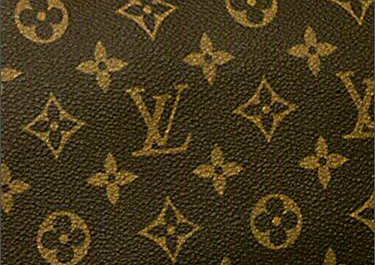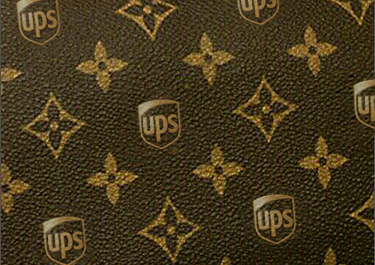What’s the ugliest pattern you’ve ever seen? Close your eyes, I’ll remind you. Start with an unfashionable color, add a poorly executed two-letter-combination logo and top if off with some clip art flowers. Can you picture it?

If you live in New York, you see this pattern everywhere. Everywhere. The subway, the elevator, and chances are, your apartment. Thousands of them line the walls and ceilings of shops down on Canal Street where you can buy movies on DVD two weeks before they hit theaters. You can buy baby turtles, Rolex watches and silk kimonos in all sizes. You can buy a $5 CD clearly labeled Jay-Z “The Black Album” although chances are when you hit play, it’ll be “ABBA’s Greatest Hits”. And you can buy 100% authentic Louis Vuitton replica handbags.
OK, maybe this isn’t the ugliest pattern you’ve ever seen. It sure isn’t the worst design you’ve ever seen. But this bag costs over seven hundred dollars. Seven Hundred F***ing Dollars! People buy bags for seven hundred dollars? Granted, 4 out of 5 of these that you see are fake, but you can buy 25 of these bags for the same price and have gifts for all of your friends.
“So I have this business plan. I’m going to sell leather purses at a 6,000 percent markup to rich people.”
“Cool, I’m going to do the same with coffee”
“Cool”
“Cool”
That conversation can never happen without branding. I know, you’re sick of brands. Brand this and brand that. You’re sick of the word and sick of the idea. Old school graphic designers and purists make fun of the word “brand”. It happened to me the other day. That’s just fine. “AIGA”, that’s a brand. “Pushpin” is a brand. I’m pretty sure “The New York Times” is a brand. Get over it. They’re all brands and they all use branding. Louis Vuitton is a great BRAND.
So, what are you buying for seven hundred dollars? It certainly isn’t the leather, although I’m sure it’s flawless. It really isn’t the bag that people are shelling out the cash for. It is the lifestyle, the envy, the feeling of success and accomplishment. The name, the identity, the image of sitting in the middle of Ducasse sipping tea. Lounging by the pool with Mommy and Philippe. Walking Muffy on Park Avenue. It is a Harry Winston necklace, Mikimoto pearls and having the driver pull the car around. It is a presidential fundraising luncheon. It is everything, all rolled into a seven hundred dollar bag.












Branding is the reason I bought my IPod.
It's the idea of being part of some kind of cool subculture. When I traveled to the mecca of culture (NYC) recently I saw IPods everywhere. Even though I didn't have it with me it made me feel good knowing I had one as soon as I got home I could also put on my white headphones.
All it is is just an MP3 player, so why did I spend $400 on that thing? It's about the brand.
On Dec.14.2004 at 10:05 AM